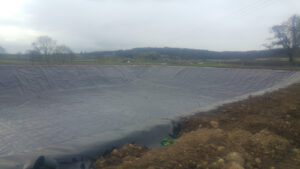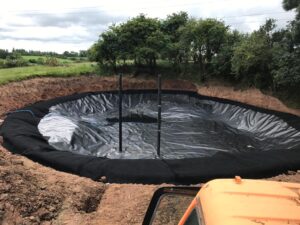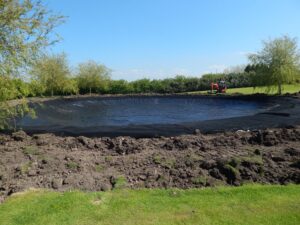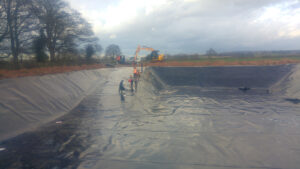Ponds are essential components of various ecosystems, serving as habitats for diverse wildlife, sources of irrigation, and recreational spaces. Ensuring their integrity and preventing water seepage is crucial for maintaining their functionality. Pond lining, a process involving the installation of barriers or liners, plays a pivotal role in preserving water levels, preventing contamination, and sustaining these valuable water bodies.
Understanding Pond Lining
Pond lining refers to the installation of materials or liners along the base and sides of a pond to prevent seepage and maintain water levels. This lining acts as a barrier, ensuring the containment of water and preventing it from infiltrating the surrounding soil.
Importance of Pond Lining
Water Conservation
Pond lining helps prevent water loss due to seepage, ensuring that the pond retains its water levels. This is especially critical in arid regions or areas experiencing drought conditions.
Environmental Protection
By preventing seepage, pond lining safeguards against potential contamination. It prevents the leaching of pollutants or excess nutrients into the soil and nearby water sources, preserving the ecosystem’s health.
Agriculture and Irrigation
Lined ponds are valuable for agricultural purposes, providing a reliable source of water for irrigation. They contribute to sustaining crops and livestock during dry periods.
Types of Pond Liners
Geomembranes
Geomembranes, made of materials like HDPE or PVC, offer impermeable barriers with excellent resistance to chemicals and UV exposure. They are versatile and suitable for various pond sizes and shapes.
Clay Liners
Natural clay liners, when properly compacted, provide effective barriers due to their ability to seal and prevent water seepage. However, they may require maintenance to sustain their integrity over time.
Concrete
Concrete is used for constructing more permanent ponds. While less flexible, it provides a robust and durable lining, suitable for larger ponds or reservoirs.
Installation and Maintenance
Professional Installation
Expert installation is crucial for the effectiveness of pond lining systems. Proper site preparation, precise installation, and quality assurance checks ensure the durability and functionality of the lining.
Regular Inspections
Periodic inspections help identify any signs of damage, wear, or deterioration in the pond lining. Timely repairs or maintenance prevent potential leaks and maintain the integrity of the pond.
Conclusion
Pond lining is a fundamental practice in preserving water resources, protecting ecosystems, and supporting various human activities. Whether for environmental conservation, agricultural use, or recreational purposes, the proper containment of pond water through effective lining techniques ensures the sustainability of these vital water bodies.
By employing suitable lining materials, ensuring professional installation, and conducting regular maintenance, pond owners and environmental stewards can effectively preserve water levels, prevent contamination, and contribute to the health and longevity of ponds, benefiting both nature and human communities.





